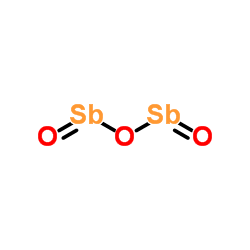Dermatitis in workers exposed to antimony in a melting process.
G P White, C G Mathias, J S Davin
Index: J. Occup. Med. 35(4) , 392-5, (1993)
Full Text: HTML
Abstract
An employee at a brazing rod manufacturing plant developed a generalized eruption of follicular papules and pustules. His job tasks included breaking up antimony ingots and melting the pieces in a crucible; he was exposed to antimony metal dust and to antimony trioxide fumes. Two fellow employees who later performed the same job tasks developed similar eruptions. The clinical and workplace evaluations suggested that the fumes from melting antimony were the cause of the dermatoses, and that the current Occupational Safety and Health Administration permissible exposure limit is not adequate to prevent cutaneous effects of antimony exposure.
Related Compounds
| Structure | Name/CAS No. | Molecular Formula | Articles |
|---|---|---|---|
 |
Diantimony trioxide
CAS:1309-64-4 |
O3Sb2 |
|
Characterization of pyramidal inversion boundaries in Sb2O3-...
2007-05-01 [Acta Crystallogr. A 63(Pt 3) , 229-33, (2007)] |
|
Biovolatilization of antimony and sudden infant death syndro...
1998-04-01 [Hum. Exp. Toxicol. 17(4) , 231-8, (1998)] |
|
Comparison of clastogenic effects of antimony and bismuth as...
1993-01-01 [Biol. Trace Elem. Res. 37(2-3) , 281-92, (1993)] |
|
Failure of antimony trioxide to induce micronuclei or chromo...
2007-03-05 [Mutat. Res. 627(2) , 119-28, (2007)] |
|
Biomonitoring of a worker population exposed to low antimony...
2002-01-01 [J. Trace Elem. Med. Biol. 16(1) , 33-9, (2002)] |